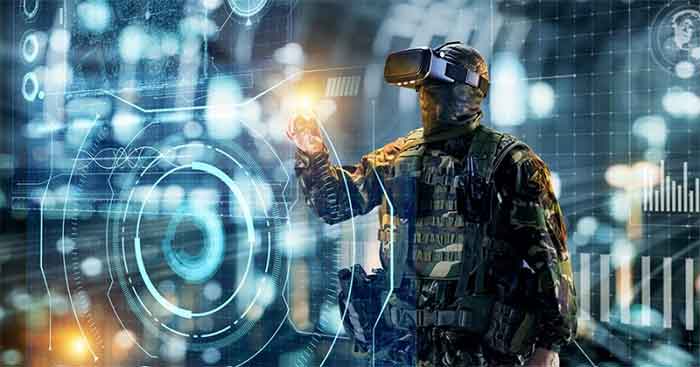
In spite of the huge protests and resistance from the public, California Public Utilities Commission (PUC) voted 4-1 in favor of the proposal to allow driverless Robo-Taxis in San Francisco.
Protesters from a broad range of activists along with supporters demonstrated outside of the California Public Utilities Commission (PUC) over their anger for support regarding the commission’s pending vote to allow the deployment and expansion of robo-taxis to operate as a 24/7 paid taxi service in San Francisco. It was lost on no one present that several blocks around the California State Building where the hearing was to take place were flooded with autonomous vehicles (AVs) this morning in a PR move from both Cruise and Waymo hoping for a favorable outcome of the vote.
Oddly, too, that since the driverless vehicles are being promoted for their safety to both passengers and the public, that several of the autos passing by had human drivers controlling them. On the issue of safety, this reporter, when stepping off the curb to get a better photo of one AV passing by, evidently caused it to come to a sudden and unexpected stop while almost being hit from behind by a human driven car. The robo-taxi remained stopped as frustrated drivers tried to negotiate their way around it in the morning traffic.
With today’s vote finally at hand for the proposal after having been postponed on July 13, the commission heard testimony from a large group of interested parties from both sides.
A consortium of activists at a morning demonstration called on the commission to reject the proposal outright while referring to the further deployment of yet more robo-taxis as a “Disney Dystopia.” Opposition to robo-taxis owned by Google/Alphabet and GM has also been raised by the San Francisco Taxi Workers and #Alliance for Independent Workers regarding the loss of jobs for drivers of both taxis and ride-hail services such as Uber and Lyft.
Another important factor of AV’s is their impact on the disabled and passengers who need assistance in entering and/or leaving the vehicles or who require help with cargo, luggage and packages. A ride is more than just a pickup at point A to point B experience. Little attention it seems has been paid to the human element of a public conveyance that accounts for many aspects of a rider’s human needs that only a human driver can offer a passenger.
An important issue, too, is the inequity and economic disparity of the required and expensive $250,000 taxi medallions that drivers have invested in to operate in the city. One speaker giving testimony during the public comments of the meeting referred to the city as a “tech Playground” for its forced adoption by state agencies on city residents.
Utilizing the city as a real-life experimental laboratory to fine tune the driverless taxis AI programs has caused a great deal of anger and resentment from emergency responders, public transit employees and citizens alike. Their erratic sudden stopping for no apparent reason, blocking of traffic in the middle of the street and numerous crossings of crime scene tape along with entering active fire scenes at least 55 times so far this year has done nothing to endear the cars with EMTs, first responders, parcel delivery drivers, sanitation workers and others.
Activists noted that while police can impound human driven vehicles “…for violating the vehicular code…Governor Newsom, the CPUC, DMV and Democratic legislature along with SF Mayor London Breed have given these companies a pass.” Resulting in what organizers refer to as “One rule for the people and drivers and another rule for the tech billionaires.”
In the absence of the city taking action, Safe Street Rebel activists, a loose coalition of protesters rebelling against unsafe streets and fighting for car-free spaces, being fed up with the ongoing invasion of the errant (AV) robo-taxis, have utilized a low-tech solution recently to disable the high-tech cars. The groups “Not Without A Fight” motto realized their promise by placing a traffic cone on the car’s front hood disabling the vehicle by stopping it in its tracks. The group’s creative action was characterized as “vandalism” by Waymo while it was applauded by many both for its creativity and for irritating the companies who have caused so much havoc in the city with arrogant and privileged disregard for their disruptions.
Of even greater concern to the groups are conflicts of interest and bias on the board’s part since its members are “hand-picked” by Governor Newsom who is in favor of the proposal’s passage. One CPUC commissioner, John Reynolds, appointed by Governor Newsom was formerly an attorney for three years at GM’s Cruise. One speaker called for commissioner Reynolds to “re-Cruise” himself from voting to render mute any possible conflict of interest accusations. Commissioner Reynolds, however, has not done so.
To add to the company’s political clout in seeing the proposal become a reality, former mayor Willie Brown was hired in 2020 as a lobbyist for Cruise noting that according to the SFIST he has been a “Cruise advisor.”
Perhaps that’s why Brown appeared in a Cruise commercial in 2022 touting how much he loved being driven around the city wherein he declared how much safer he was rather than when driving. With the inducement of his being remunerated for his position he may once again be taking the public for a ride with his comments on the ride’s safety considering the series of incidents the cars are experiencing in the real world.
Just prior to the beginning of today’s meeting, a large group of young adults all sporting bright yellow t-shirts emblazoned with “Safer Roads for All” descended on the building where they held a short press conference. Their uniformity and organization made it obvious that the group was being sponsored by the two companies. Along with the constant parade of AV cars passing by in the background, they made a major effort of promoting their cause.
During their press conference, President Olga Miranda of Service Employees International Union 87 (SEIU) spoke in the affirmative by supporting the proposal in part saying: “We are labor and we support the expansion of the Cruise and Waymo vehicles.” She did not mention the displacement and loss of other union members’ jobs in the taxi drivers union whom one would assume she would stand in solidarity with.
With densely impacted city streets, adding more cars in San Francisco to satisfy techie types and investors is a bad idea. What the city urgently needs is a modern, frequent and efficient public transportation system and fewer cars. As several speakers warned, “what California and San Francisco adopt today, the world will follow.” The world, for its part, now experiencing the worsening havoc caused by climate change, must rethink the viability of transporting individuals in separate vehicles as an outdated mode that must be eliminated in favor of more efficient and less impactful solutions.
Photo by Phil Pasquini
(This article has previously appeared in the Washington Report on Middle East Affairs, Pakistan Link and Nuzeink.)
Phil Pasquini is a freelance journalist and photographer. His reports and photographs appear in the Washington Report on Middle East Affairs, Pakistan Link and Nuze.ink. He is the author of Domes, Arches and Minarets: A History of Islamic-Inspired Buildings in America.
















































